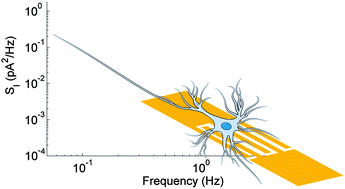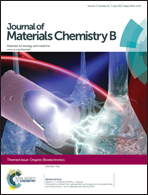Low frequency electric current noise in glioma cell populations
Abstract
Measuring the electrical activity of large and defined populations of cells is currently a major technical challenge to electrophysiology, especially in the picoampere-range. For this purpose, we developed and applied a bidirectional transducer based on a chip with interdigitated gold electrodes to record the electrical response of cultured glioma cells. Recent research determined that also non-neural brain glia cells are electrically active and excitable. Their transformed counterparts, e.g. glioma cells, were suggested to partially retain these electric features. Such electrophysiological studies however are usually performed on individual cells and are limited in their predictive power for the overall electrical activity of the multicellular tumour bulk. Our extremely low-noise measuring system allowed us to detect not only prominent electrical bursts of neuronal cells but also minute, yet constantly occurring and functional, membrane capacitive current oscillations across large populations of C6 glioma cells, which we termed electric current noise. At the same time, tumour cells of non-brain origin (HeLa) proved to be electrically quiescent in comparison. Finally, we determined that the glioma cell activity is primarily caused by the opening of voltage-gated Na+ and K+ ion channels and can be efficiently abolished using specific pharmacological inhibitors. Thus, we offer here a unique approach for studying electrophysiological properties of large cancer cell populations as an in vitro reference for tumour bulks in vivo.

- This article is part of the themed collection: Bioelectronics

 Please wait while we load your content...
Please wait while we load your content...